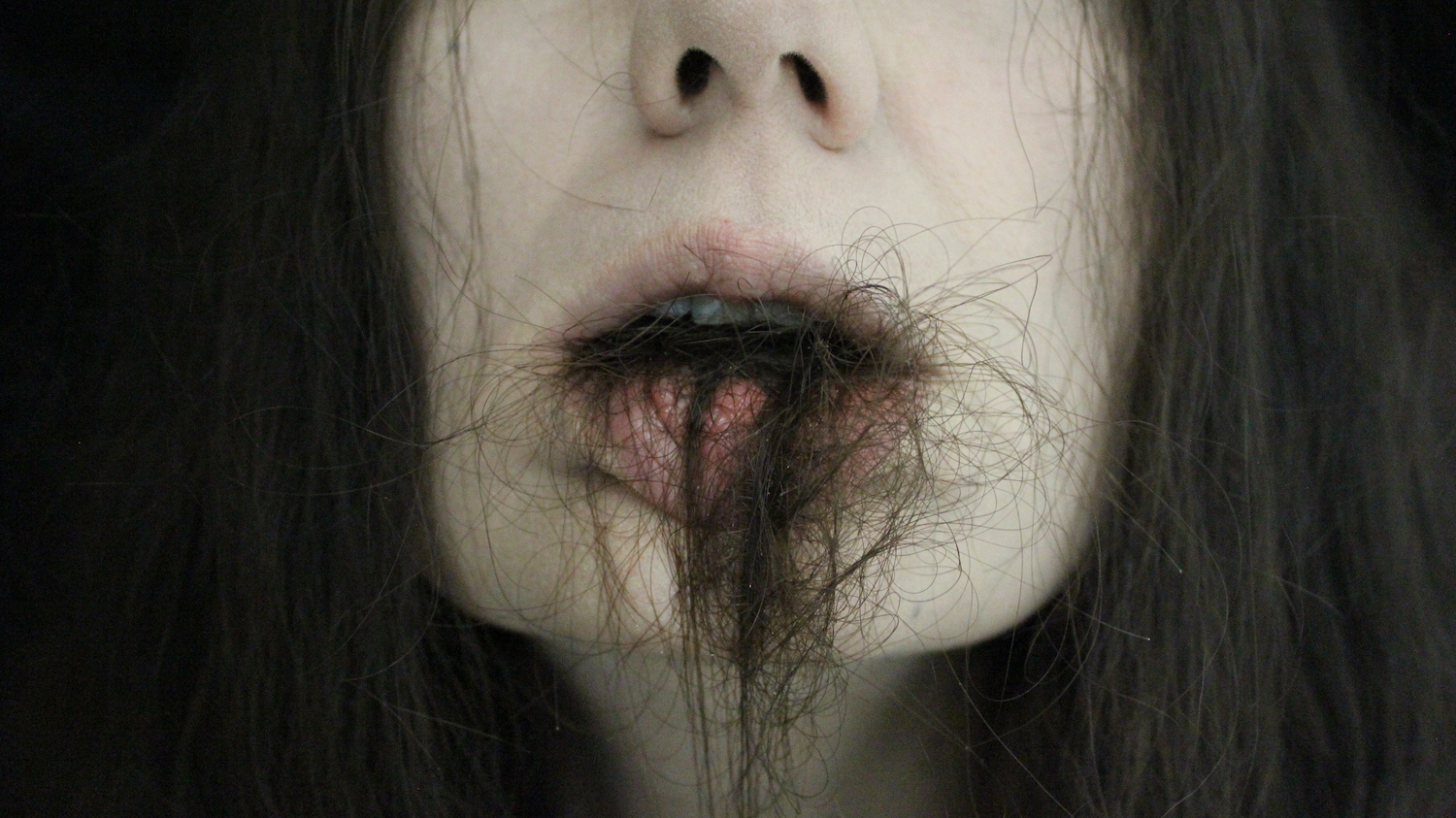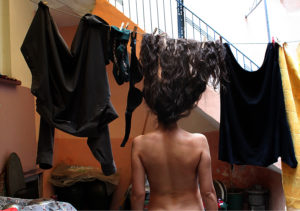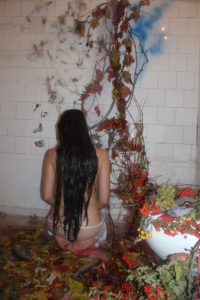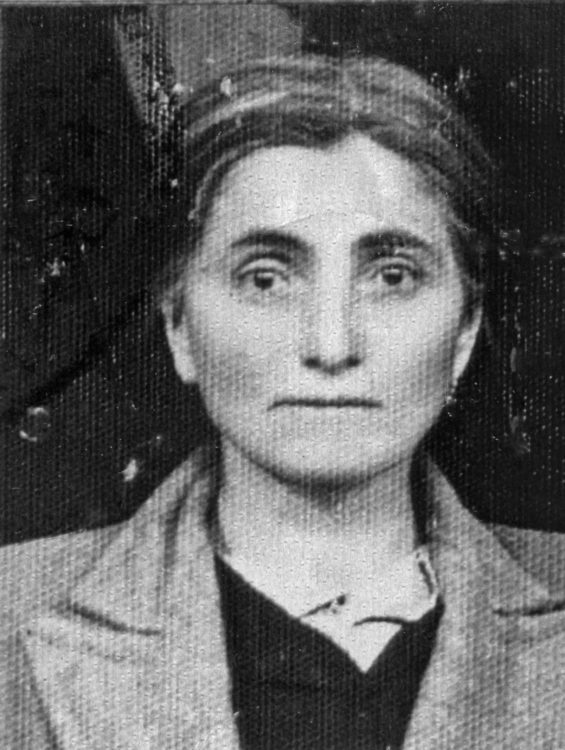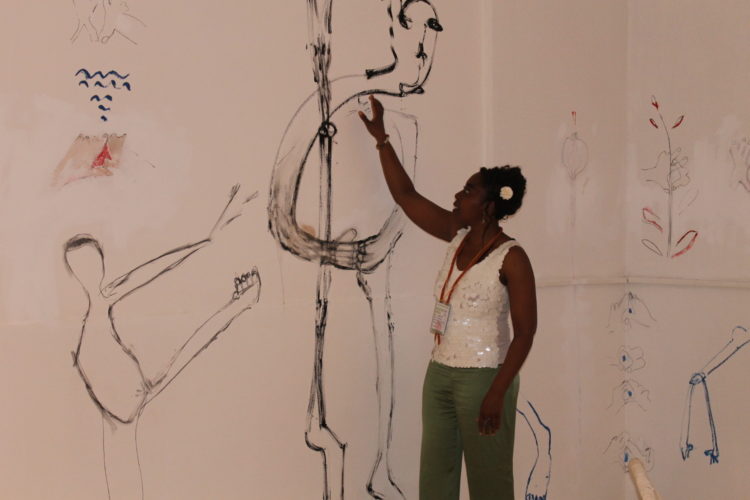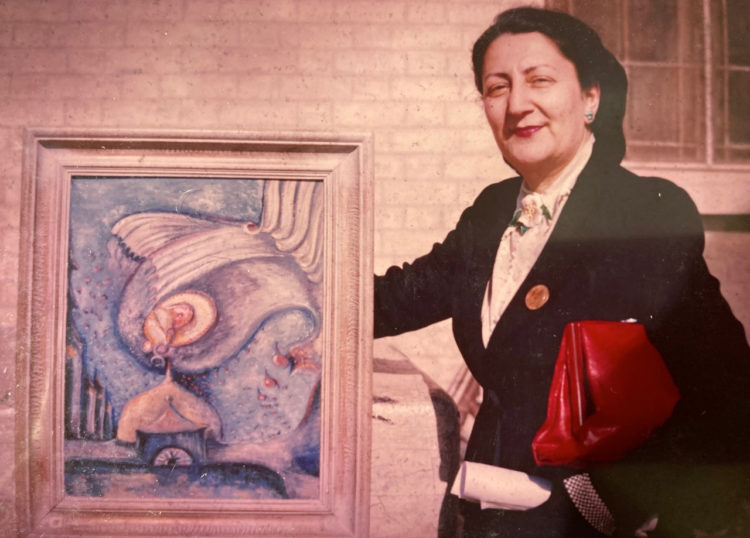Interviews
Fatoş Irwen is a Kurdish visual and performance artist from Diyarbakır, a town in south-east Turkey. Growing up in a patriarchal and religious family environment, F. Irwen began painting at the age of four, creating a private, imaginary world for herself. The artist’s childhood offers unfiltered access to the origins of her art, but also mythology and the political atmosphere in Turkey have been among her inspirations and motivations. F. Irwen was a political prisoner for three years, arrested in 2017 following a protest against the Turkish government.
Ceren Özpınar: Could you briefly introduce us to your medium and to your artistic background?
Fatoş Irwen: Painting has been my main medium since childhood, which allowed me to create a mental space for myself among the conditions of intense political oppression in Diyarbakır and living under the same roof with my extended family of twenty people. Given the special, personal rapport I have had with particular objects and environments throughout my life, I have also gradually incorporated different mediums, such as installation, photography, video and performance into my practice. Sadly, my family never supported my aspiration to become an artist, but I never gave up on my dream and had to take the entrance exams for art school secretly. Since graduating with a degree in Painting and Art Education from Dicle University in 2004, I have worked both as an artist and designer, and taught art in Batman, Diyarbakır and Istanbul.
CÖ: Which sources, artists and artworks influenced your art? What were your first artistic inspirations?
FI: Growing up I was a shy and quiet child; I daydreamed a lot and embraced solitude among crowds, but I also had a very inquisitive mind. I found a safe space in my grandparents’ house, which was a place abandoned by my family. I found a treasure there: a world of old books and magazines on history, migration, mythology, films, comics, fairy tales and newspapers, which used to belong to my cinema-loving uncle. I stayed there for days, unnoticed by my family, thinking, reading and painting. I found escape in art, literature and philosophy.
CÖ: In your art you show us the alternative ways of being a woman by moving beyond the stereotypes of Middle Eastern woman and expressing displeasure with the socially constructed gender roles. What are some of the main themes in your work?
FI: My works are linked to my lived experiences, social criticism and the need for social protest, and are driven by life-long questions of gender, body politics, religion, patriarchy and femicide. A strong recurring theme is the ongoing oppression against the Kurds in Turkey. Therefore, justice and freedom are key notions in my work. More specifically, I capture and interweave my memories, dreams, psyche, Kurdish collective memory, women’s struggles, my family’s religious notions and oppressive state policies. It is an attempt to address the psychological impact of all these issues on women around me.
A recurring material in my performances is hair. Because of the corporeal and temporal memory it contains, I believe human hair perfectly characterizes notions of life, death and dissidence, and it appears in my works such as Bahar Temizliği [Spring Cleaning, 2010] and Patolojik Hafıza [Pathological Memory, 2012]. Olağan Zamanın Dışında [Exceptional Times, 2010] also features human hair as a marker of memory, death and the cycle of life.
This was a performance that has stemmed from one single event but represents the stories of many Kurdish revolutionaries. When I was a child I remember hearing about one such revolutionary, whose grave was destroyed soon after his tragic death. This intense effort to destroy the memory of Kurdish people still continues today, and has a deep personal effect on me, which I tried to revisit in this work. In this context, hair stands as a poetic vision and hope against the politics of destruction and power.
Füg [Fugue, 2012] is a performance that I developed in the aftermath of my first experience in police custody, during which I was physically and sexually abused. This was a performance that took place in a bathroom, which was filled with outdoor plants, leafy bushes, leaves, dead fish, fruits, boot stains. It went on until everything became abstract in the midst of steam. Hence the work bears witness to my mental state at the time, which wandered between the awake and dream state, and symbolizes my attempts of healing and liberating myself from the burden of those awful memories. While the natural elements represent my regression into childhood and the revisiting of each colour and object in my memory, as if I were on my deathbed; the mundane objects depict the harsh reality of what I had been through.
Fatoş Irwen is a feminist Kurdish contemporary artist. She was born and raised in Suriçi, Diyarbakır. She studied Painting and Fine Arts Education at Dicle University. From 2017 to 2020 F. Irwen was held as a political prisoner. She currently lives and works in Istanbul and Diyarbakır. Her work has been exhibited in Iran, Germany, Austria, Hongkong, Iceland, France, Mexico, Iran, Morocco, Stockholm and Turkey.
Dr Ceren Özpınar is Senior Lecturer at the University of Brighton, History of Art and Design Programme. She is the co-editor of Under the Skin: Feminist Art and Art Histories from the Middle East and North Africa Today (Oxford University Press, 2020), and the author of Turkey’s art historiography, Türkiye’de sanat tarihi yazımı (1970-2010) (Tarih Vakfı, 2016).
An article produced as part of the TEAM international academic network: Teaching, E-learning, Agency and Mentoring.
